06.09.2019 – THE GAIDAR READINGS IN KHABAROVSK
The sponsors of the Readings were the Gaidar Institute and the Far-East Institute of Management, Branch of RANEPA, while the partner of the Readings was the OOO Baltika Brewing Company.
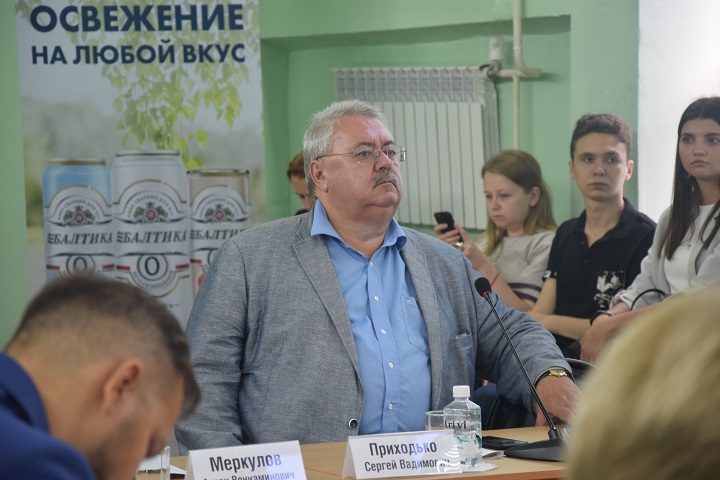
Alexei Vedev, Leading Researcher of the Gaidar Institute delivered the report: “The Factors of Sustainable Development of the Russian Economy in the Mid-Term Prospect”. In his speech, Alexei Vedev presented the main parameters of the forecast of the Ministry of Economic Development of the Russian Federation in the period till 2024 and pointed to the reduction of GDP annual growth rates fr om 2.3% in 2018 to 1.3% in 2019 with further growth to 3.3% in 2024.
According to the speaker, investments in machines and equipment, including household equipment and other facilities have had a decisive effect on the dynamics of the investment process. It is to be noted that the decrease and the beginning of growth in investments in general were the result of a real decline by one-third in investments in equipment and their subsequent growth of 17%. As regards other investments, the dynamics “without ebbs and jerks were just weak”, the expert noted.
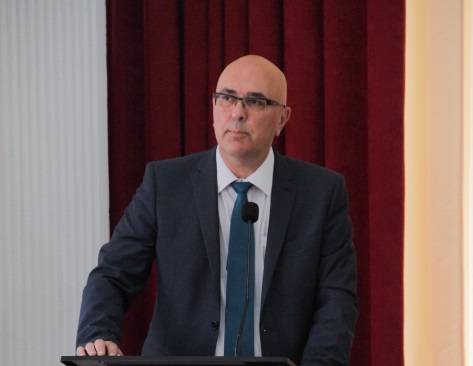
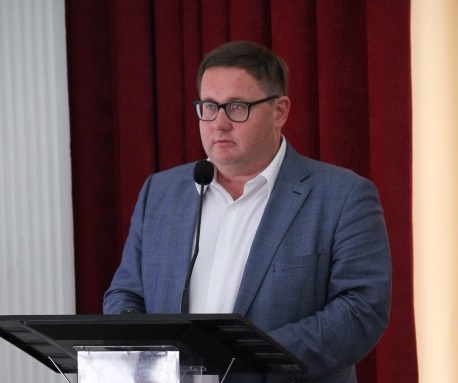 Sergei Drobyshevsky, Academic Director of the Gaidar Institute presented the report: “National Projects and National Goals: Managing the Development”. According to Sergei Drobyshevsky, in 2000–2018 Russia made a substantial breakthrough in building the full-fledged market economy, however, amid the moderate situation on primary commodity markets structural changes alone were not sufficient enough for underpinning sustainable growth above the worldwide average. A lack in technology, low efficiency, demographic changes and insufficient quality of the human capital, low standard of state management and geopolitical changes prevented this country fr om promoting its economic development rates.
Sergei Drobyshevsky, Academic Director of the Gaidar Institute presented the report: “National Projects and National Goals: Managing the Development”. According to Sergei Drobyshevsky, in 2000–2018 Russia made a substantial breakthrough in building the full-fledged market economy, however, amid the moderate situation on primary commodity markets structural changes alone were not sufficient enough for underpinning sustainable growth above the worldwide average. A lack in technology, low efficiency, demographic changes and insufficient quality of the human capital, low standard of state management and geopolitical changes prevented this country fr om promoting its economic development rates.
According to the expert, there are two ways of solving economic problems: a market method and a state one. Furthermore, there is no conclusive evidence that long-term social and economic development takes place owing to governments’ efforts. It is not the development of the optimal state policy that matters, but the creation of the environment of political and economic motivation where political and economic entities would find effective solutions in the interests of their own development, Sergei Drobyshevsky stressed.
Further, Sergei Drobyshevsky spoke more thoroughly about the President’s Executive Order No.204 of May 7, 2018 which set nine national development goals, 13 national projects and over 150 goals and targets. Sergei Drobyshevsky touched upon the pattern of financing the national projects of 2019–2024 and assessed the feasibility of the national goal of entering the world’s top five largest economies.
In his report, Vladimir Yefremenko, Associate Professor of the Department of Management and Business Law, Head of the Innovation and Technology Center of the Far-East Institute of Management, Branch of RANEPA elaborated on the Regional Innovation System (RIS) as an instrument of advanced development of constituent entities of the Russian Federation in the Far Eastern Federal District.
“Experience has shown that RIS components can be established within a short period of time, while their system networking produces an economic and social effect on the development of the region. A broader application of the RIS concept can become an important part of the government’s regional policy”, the expert stressed in conclusion of his speech.
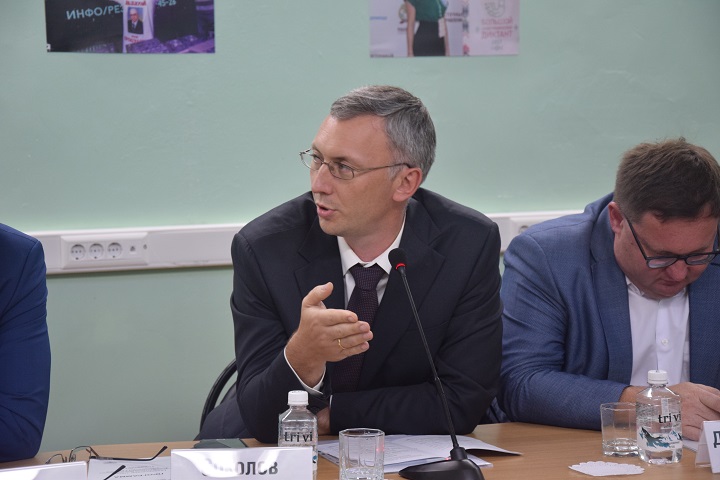
According to the speaker, national projects account for 1.8% of GDP and around 10% of the federal budget expenditures. There is concern that 10% is a rather small amount for real serious changes to take place. However, “it should be remembered that the remaining expenditures of the budget system – operating costs on education and healthcare, road building expenditures and subsidies to enterprises of the real sector of the economy – should also follow the logic of changes brought about on the back of national projects”, so “10% of the federal budget expenditures on national projects is quite a large amount for those changes to produce real results”.
Speaking about the effect of national projects on the pattern of the budget of the expanded government, the expert said that in their current form national projects would not affect dramatically the pattern of expenditures. “More importantly, according to our estimates they will affect in no way economic growth”, the expert stressed.
Revenues and expenditures of regional consolidated budgets will be lagging behind GDP mainly by the value of reduced transfers. In a situation wh ere funds on national projects are channeled through other inter-budget transfers, there are high risks of the share of non-purpose transfers out of the federal budget to regions being reduced, which factor is explicit evidence of adjustment of financial solvency of different regions getting worse, that is, they are taken hostage of national projects, Ilya Sokolov said.
“The volume of regions’ expenditures on national projects does not seem to be high; it is within the range of 8%-9% of all the expenditures and even lower provided that own funds are taken into account. It is hard to say at the moment what amount of such funds is already included in the budget and what additional expenditures are going to be made. However, there is a risk that growth in the real volume of regions’ own expenditures on national projects with the overall real volume of budget expenditures being reduced may result in a situation wh ere at the regional level national projects will be financed at the cost of underfunding other lines in respect of which the residual principle is going to be applied.”
Considering the pattern of expenditures of regions and the Khabarovsk Territory, the expert said that they were much alike. “A little less than a half of the expenditures can be attributed to notionally productive ones. Education takes a quarter of all budget expenditures which situation is typical of all the regions. With the specifics of national projects taken into account, this pattern has probably changed somewhat in favor of productive items.”
Also, Ilya Sokolov mentioned concrete measures on each main line of upgrading of inter-budget relations: reduction of the share of specific-purpose transfers; decentralization of regulation of expenditure authorities of constituent entities of the Russian Federation; adoption of the agglomerative way in the spatial development of the Russian Federation for the purpose of concentration of resources, competences and breakthrough technologies in explicit growth points; promotion of the income basis and fiscal independence of regions and municipal entities; engagement of households in managerial decision-making at the level of regions and municipal entities.
Presentation to the report
Dmitri Pugachev, Acting Deputy Chairman of the Government of the Khabarovsk Territory and Acting Minister for Economic Development of the Territory spoke about the economic prospects of the Khabarovsk Territory pursuant to the National Program for Development of the Far East.
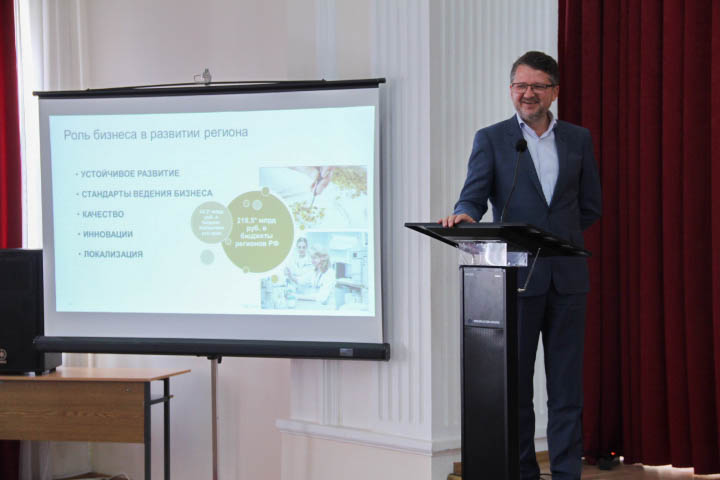 Alexei Kedrin, Vice President for Networking with State Authorities and Corporate Relations of the Eastern Europe Region, the Baltika Brewing Company delivered the report: “The Role of Business in Development of the Far East: Focused Specialization or Comprehensive Approach?”
Alexei Kedrin, Vice President for Networking with State Authorities and Corporate Relations of the Eastern Europe Region, the Baltika Brewing Company delivered the report: “The Role of Business in Development of the Far East: Focused Specialization or Comprehensive Approach?”
Alexander Knobel, Head of the International Trade Department of the Gaidar Institute spoke about the prospects of the trade and economic cooperation of Russia and the Far Eastern Region with countries of the Asia-Pacific Region (APR).
Speaking about the external conditions of development of cooperation with the Asia-Pacific Region, the expert said that according to the forecasts of the World Bank, the OECD and the IMF the volume of the global economy would grow by 2.6%–3.3% and 2.7%–3.6% in 2019 and 2020, respectively, with the growth rates of global trade amounting to 2.6%–3.3% and 3.1%–3.9%, respectively.
Alexander Knobel touched upon trade barriers which slowed down the development of the global trade. So, in 2018 the number of non-tariff measures (covert protectionist practices) increased to 12366, while in 2000 their number was equal to 3248. The slowdown of the global trade was also caused by growing uncertainties brought about by an increase in the number of regional trade agreements – since the early 2000s their number has nearly doubled and amounts at present to 700 agreements – and manifestations of the crisis of the multilateral trade system: nontransparent trade policies, stagnation of negotiations, unjust trade practices and the crisis of the WTO’s Dispute Settlement Body.
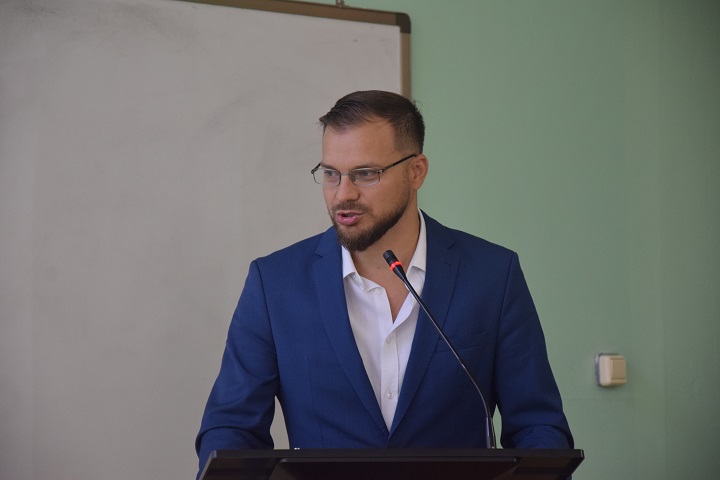

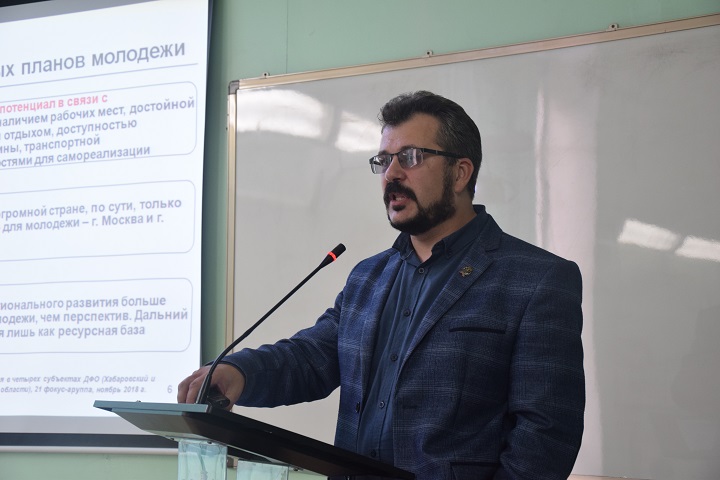
The expert said that Russia had developed the mechanism of reduction of tariff restrictions with demands of the business taken into account and the work was being carried out on non-tariff measures and liberalization of access to services and investments.
Alexander Knobel elaborated on the trade war of 2018–2019 and assessed its consequences. According to the expert, the main beneficiaries of the trade war are industries with unskilled labor in the US, while almost all other industries both in the world and China (except, probably, the plant industry) are losing or at best winning insignificantly; it is noteworthy that China is hit the most.
As a result of endorsed decisions, the trade flows will be redirected from the US-China line to the US-the rest of the world line and within the rest of the world, but the trade will shrink anyway. The overall effect on the global economy will be slightly negative; in future it may increase. In the long-term prospect, the trade war may cause a transfer of manufacturing back to the US. The effect on Russia is currently rather weak, but in future such processes may either clear niches or step up competition for Russia, the expert stressed.
Further, Alexander Knobel touched upon the state of Russia’s foreign trade with countries of the Asia-Pacific Region, as well as the role of the APR in foreign economic ties with Russia’s Far East.
The topic of the report by Yuri Berezutsky, Head of the Scientific Research Laboratory of the Far-East Institute of Management, Branch of RANEPA was “The Youth and Development of Far East: Expectations and the Reality”.
Speaking about the specifics of the youth’s project of life, Yuri Berezutsky pointed out a high migration potential caused by dissatisfaction with availability of jobs, the level of labor remuneration, the standard of leisure and recreation, availability of housing, the standard of medical services, transport accessibility and a lack of self-actualization opportunities. According to the expert, the real problem consists in the fact that in such a big country as Russia there are only two “centers of attraction” for the youth: Moscow and St. Petersburg. “As regards the forecast of regional development, there is more pessimism in the youth’s estimates than optimistic expectations. The Far East is perceived by the population as a resource base”, Yuri Berezutsky concludes.

The expert spoke about the stimuli of attraction of foreign students to Russian educational establishments, including: employment of at least 5% of foreign students who completed their education in much required lines of training with Russian companies; building and modernization of campuses for foreign students and educational and research personnel; establishment of resource centers for children and teachers who promote in-depth studying of general educational subjects (math, biology, chemistry, physics, astronomy and other) in Russian in partner countries, etc.
Tatyana Lukasevich, Dean of the Department of State and Municipal Management of the Far-East Institute of Management, Branch of RANEPA dedicated her report to the current state and prospects of development of the labor market of the Far Eastern Federal District.